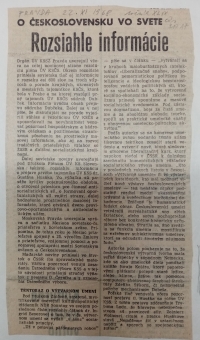I was jangling the keys, but the changes came too late in my life

Download image
Milan Dobeš was born in 1929 in Přerov. He graduated from the VŠMU (Academy of Performing Arts, Slovak: Vysoká škola muzických umení, VŠMU) in Bratislava and he belongs to an extremely talented generation of artists who emerged in Slovakia in the late 1950s and early 1960s. He participated in numerous world exhibitions: Documenta 4 in Kassel, ARS ´69, the Constructivist Biennial in Nuremberg, Salon de Mai (the May Salon) in Paris, EXPO ´70 in Osaka, and many more. In 1971, he toured the United States with his “lumino-dynamic projects” in collaboration with the American Wind Symphony Orchestra. His artistic manifesto is called Dynamic Constructivism. Milan Dobeš was a member of the Geometria group in Prague and in 1991, he joined the Q group in Brno. His artwork has been featured in numerous prominent museums and galleries around the world. In 2001 the Milan Dobeš Museum was founded in Bratislava. Since 2016 Milan Dobeš has been living in Ostrava-Vítkovice. He was awarded the Slovak Culture Minister’s Prize in 2012.










